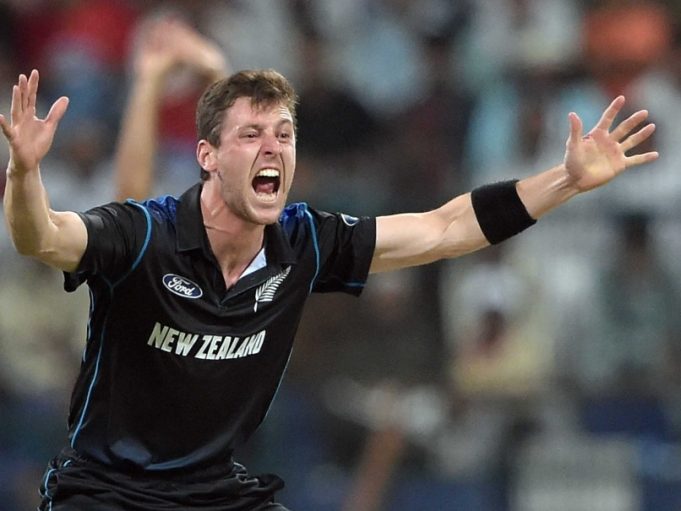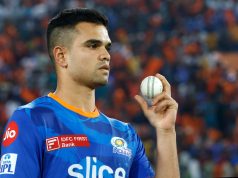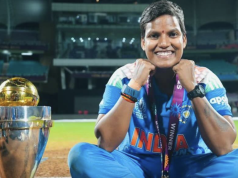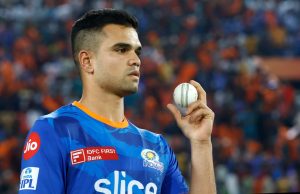Matt Henry belongs to that rare breed of players who are a major force yet do not seek the limelight. He has been quietly carving his place among the top bowlers across formats, and by the time he ends his career, he might well be regarded as one of the finest pacers ever produced by New Zealand.
In the recent years, New Zealand’s pace bowling department has undergone a remarkable transformation. Three of its greatest fast bowlers — Tim Southee, Trent Boult, and Neil Wagner — have bid adieu under different circumstances. Their exits created a massive void. Normally, any team would struggle after losing such world-class performers.
However, the BlackCaps are among the best-managed in the world, which explains why they consistently remain among the top five teams globally across all formats — alongside Australia, England, India, and South Africa.
Even after the retirement of these stalwarts, New Zealand’s pace attack still boasts impressive depth. The frontline includes Matt Henry, Kyle Jamieson, Will O’Rourke, Ben Sears, and Jacob Duffy, while the next line features Matt Fisher, Zakary Foulkes, and Nathan Smith. Among them, Matt Henry has emerged as the leader — a world-class fast bowler and arguably one of the top five across formats in the world today.
Matt Henry, lest it is forgotten, made his Test debut against England in 2015, a year after he had impressed in his ODI debut at the age of 22 against India in January 2014. His talent was evident from the start, and it seemed he was destined for a long international career. However, his early Test performances were inconsistent, largely due to limited opportunities and inexperience.
He was not the preferred choice in T20 Internationals either. As New Zealand continued their rotation policy with bowlers, Henry found his niche in One Day Internationals, where he truly began to shine.
Between January 2014 and December 2023, Henry played 65 ODIs and took 116 wickets at an average of 25.47. Over this period, he established himself as a reliable ODI specialist. However, his Test record appeared modest. By the end of New Zealand’s tour of Pakistan on January 6, 2023, he had played just 18 Tests in seven and a half years, taking 55 wickets at an average of 41.09.
Henry, however, became the leader New Zealand needed after the exit of their senior bowlers. Following their World Test Championship triumph in 2019–2021, the team faced a transition phase as several big names departed between 2021 and 2023. This was when Henry rose to prominence. Over the past three years, he has evolved into the spearhead of the BlackCaps’ bowling attack, an indispensable figure across formats.
In these three years, Henry has played 14 Tests and taken 81 wickets at an exceptional average of 18.11 — one of the best figures among contemporary fast bowlers worldwide. He has also continued to excel in ODIs, taking 49 wickets in 26 matches at 23.24. In T20 Internationals, he has claimed 33 wickets at an impressive average of 21.33 in 25 games. Since assuming leadership responsibility, Henry’s performance has been outstanding, reflecting his temperament, discipline, and consistency.
His presence has been pivotal in ensuring that New Zealand remains competitive against the strongest teams. His control of line and length, coupled with his ability to seam and swing the ball both ways, has troubled even the best batters across conditions. A prime example of his match-winning ability was his superb spell in the final over of the Tri-Series held recently in Zimbabwe. South Africa appeared poised to clinch the title, but Henry’s clever variations and sharp lengths turned the game, guiding New Zealand to victory.
It would not be an exaggeration to say that Henry is currently New Zealand’s most valuable player — the one who consistently impacts the outcome of matches. Another instance highlighting his importance was during the Champions Trophy, where he led New Zealand brilliantly up to the final. However, his absence in the title clash due to injury proved costly, as India went on to lift the trophy. His absence underlined how integral he had become to his BlackCaps’ success.
That told, Matt Henry is now 33.
Yet, with his fitness and discipline, he can easily continue for another two to three years. In that time, he will be vital for New Zealand’s campaigns in the upcoming T20 World Cup in India in 2026, the ODI World Cup in Africa in 2027, and the ongoing World Test Championship cycle. New Zealand will undoubtedly hope he remains fit and in prime form for these crucial assignments.
The disciplined right arm pacer’s quiet demeanour, relentless work ethic, and selfless attitude make him an ideal representative of New Zealand cricket’s values. He may not always grab headlines like some of his contemporaries, but his consistency and effectiveness speak louder than words.
In an era where fast bowlers often chase glamour through franchise leagues, Henry’s commitment to the national cause and his adaptability across conditions stand out. As New Zealand continues its transition phase, Matt Henry’s experience and skill will play a defining role in shaping their future. Whether it is swinging the new ball under cloudy New Zealand skies, extracting seam movement on green wickets in Wellington, or maintaining control on flat Asian pitches, he has repeatedly proven his class.
Quite frankly, one is glad at engaging in some speculative work and it’s that by the time he retires, there is a very realistic chance that Matt Henry will be remembered alongside the greats like Richard Hadlee, Tim Southee, Trent Boult , Neil Wagner and Shane Bond— not merely for hisnumbers but for the quiet resilience with which he carried New Zealand’s pace attack forward in a period of change. In every sense, Matt Henry remains a silent world-class force, a symbol of understated excellence in modern cricket.
Matt Henry’s record international record
136 Test wickets- 32 matches
167 ODI wickets- 92 matches
40 T20I wickets- 31 matches












